Irish Soda Bread is the ultimate quick bread to use as a side for soups, stews, and all sorts of meals. There’s no yeast so there’s no waiting. Just mix and bake! This traditional recipe delivers a crispy, golden crust with a soft, tender inside that’s just begging for a smear of butter.
Why Our Recipe
- Super easy, no yeast, and ready in under an hour. Just mix, shape, and bake!
- Crispy crust, soft inside which is perfect for slathering with butter.
- Keep it plain or add raisins and/or caraway for extra flavor.
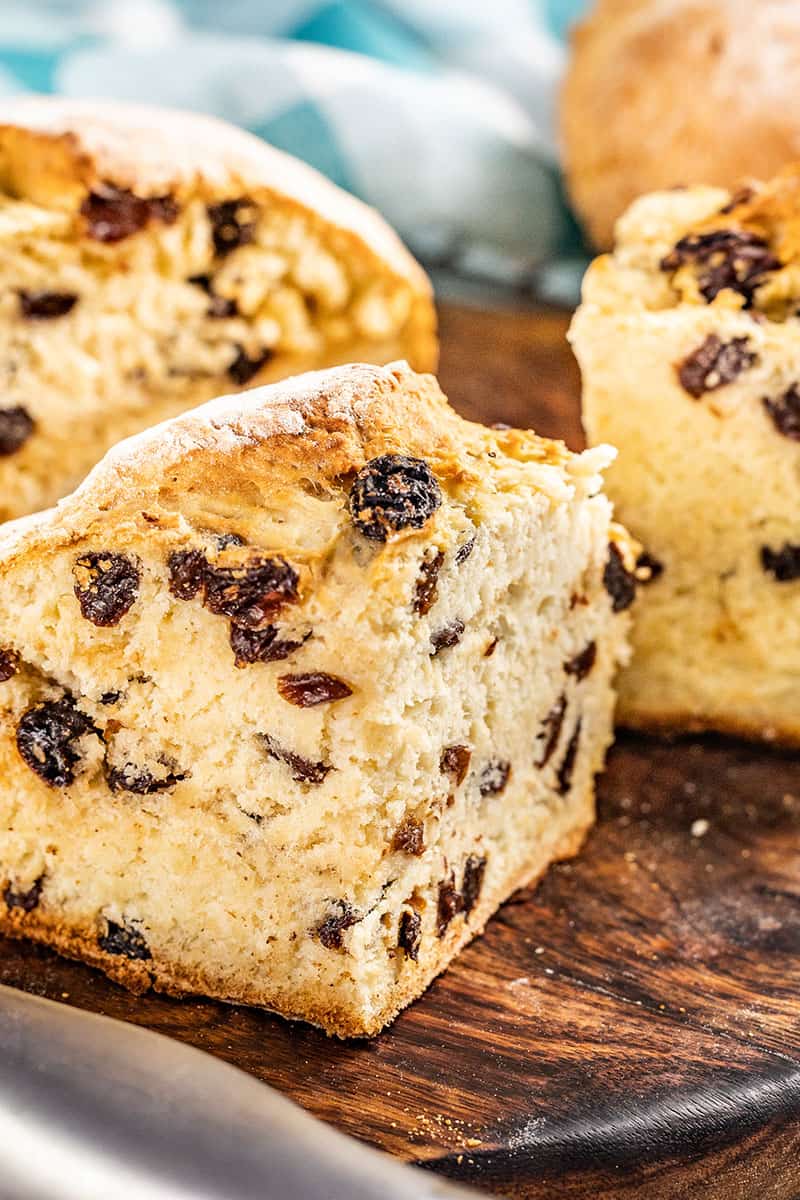
This bread is a go-to for me for a lot of reasons. It uses pantry staples I always have on hand and I can have warm, fresh bread on the table in under an hour. Adding raisins is traditional, and so is caraway, but you can always leave it plain. We particularly love this bread with caraway for extra flavor.
Ingredient Notes
- All-Purpose Flour: You start with 2 ½ cups and then add more as needed. Too much flour will make the bread dense, so add gradually.
- Salt: This bread is salty and savory. If you prefer less, you can reduce it to 1 teaspoon.
- Baking Soda: Make sure that baking soda is fresh because this is where the rise comes in without yeast.
- Buttermilk: If you don’t have buttermilk, mix 1 ½ cups milk with 1 ½ tablespoons lemon juice or vinegar and let it sit for 5 minutes.
- Raisins: Traditional in Irish soda bread! Use regular or golden raisins, or swap them for currants. Or leave them out entirely.
- Caraway Seeds: These add a slightly nutty, anise-like flavor which we love.
How Much Flour to Add
Flour amounts in bread recipes always vary a little because things like humidity and altitude can affect how much you’ll need. That’s why it’s best to start with the lower amount. In this case, we start with 2 ½ cups while you are still stirring, and add more flour while kneading.
The dough should be soft, slightly sticky, and easy to work with. If it’s too wet and sticks heavily to your hands or the counter, sprinkle in more flour a little at a time until it firms up. You want it tacky but not overly sticky. Be careful not to add too much, though! Extra flour can make the bread dense and dry.
Since Irish soda bread is a quick bread with no yeast, the dough will feel softer than traditional bread dough, and that’s okay. A little stickiness is normal, but it shouldn’t be dry or crumbly.
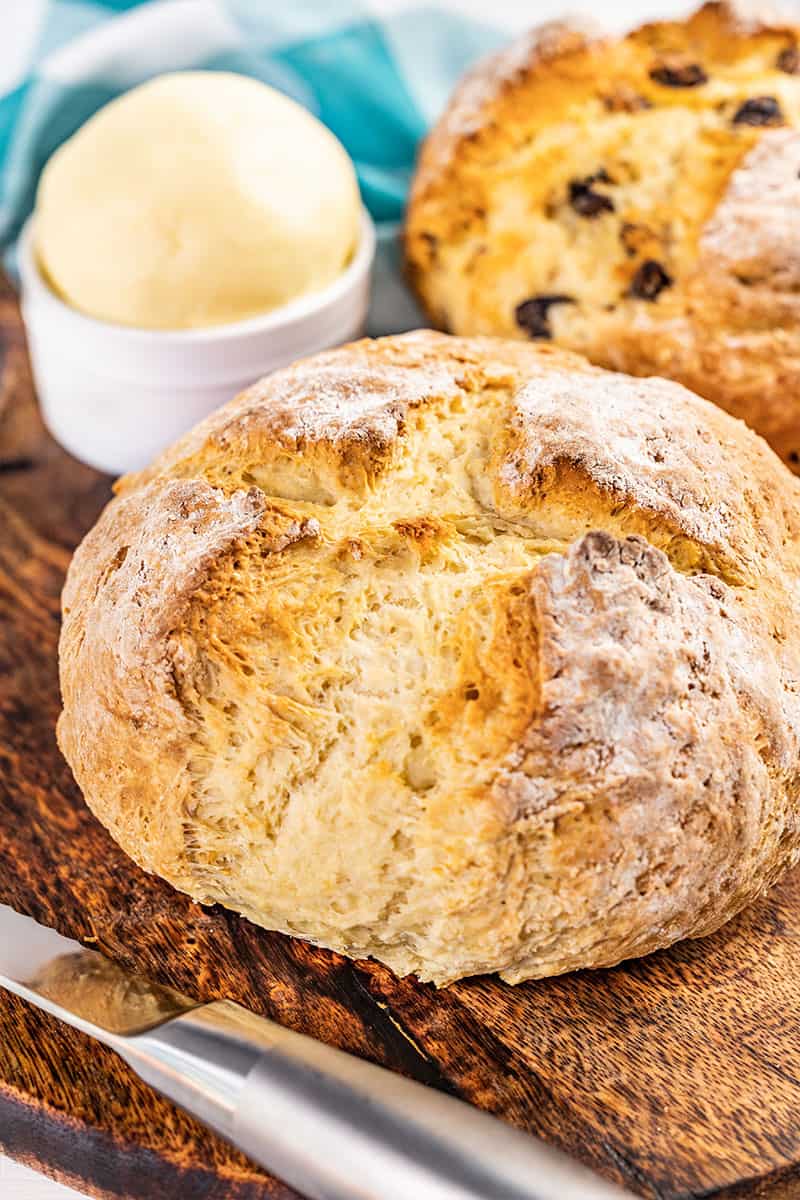
Raisins and Caraway: Optional
Raisins and caraway seeds are both traditional in Irish soda bread, but whether you add them is totally up to you! You can add both, just one, or skip them entirely—either way, this bread will turn out delicious!
Raisins add pops of sweetness that balances out the saltiness of the bread. Regular or golden raisins both work, or you can swap them for currants, which are slightly smaller and a little tangier. Not a fan of raisins? Feel free to leave them out.
Caraway Seeds bring a nutty, slightly anise-like flavor that gives the bread a more distinctive taste. They aren’t overpowering, but they do add noticeable flavor. If you’ve ever had rye bread, you’ll recognize the subtle hint of caraway. If you’re unsure, try adding just a little and see what you think!
What to Bake it On
You don’t need any fancy equipment to bake Irish soda bread, but different pans can change the crust and texture a bit.
Baking Sheet: The easiest and most common choice! A simple baking sheet lets the bread cook evenly and develop a crisp crust all around.
Cast-Iron Skillet: Want to go old-school? A cast-iron skillet holds heat really well, which helps create a beautifully golden, crisp crust—similar to how it was traditionally baked.
Dutch Oven: If you like a softer crust, baking in a Dutch oven with the lid on traps steam, which makes the bread extra tender. This mimics the Irish “bastible” method.
Storage Instructions
Irish soda bread is best enjoyed fresh. Store leftovers at room temperature in an airtight container, plastic bag, or wrapped tightly in plastic wrap. It will stay fresh for 2 to 3 days.
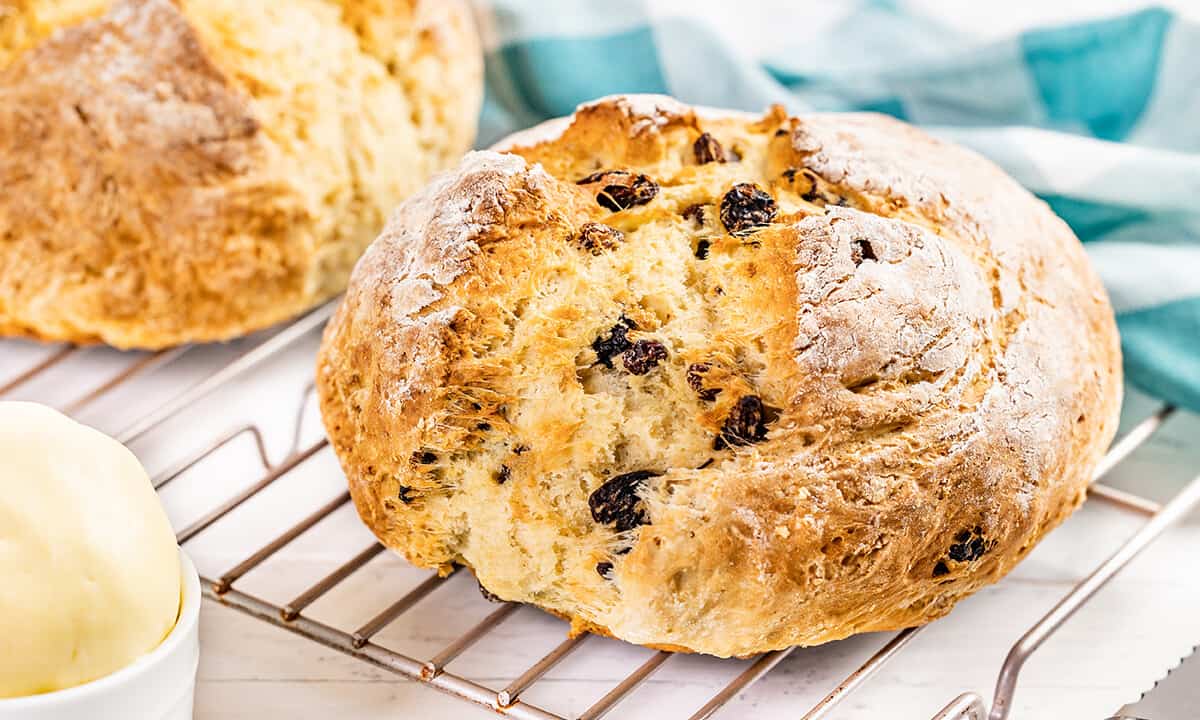
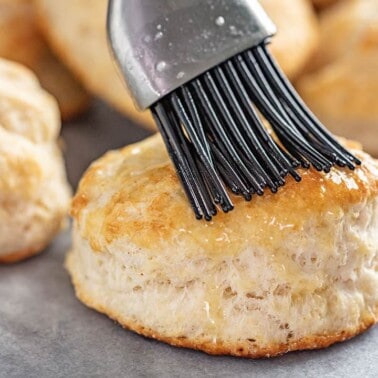
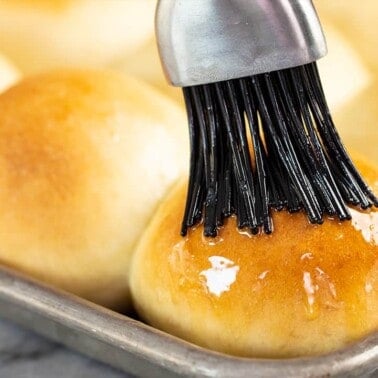
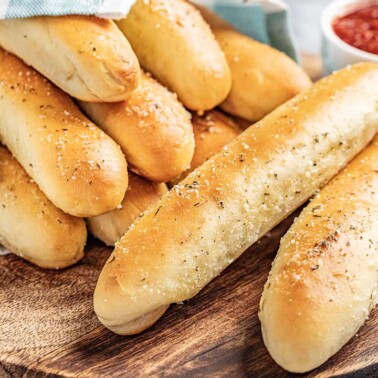
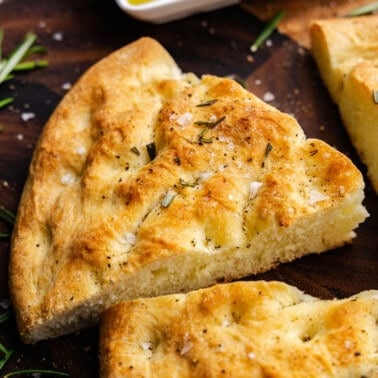
Can you please fix the flour error? The listed ingredients say 3 to 3 1/2 cups. The step by step says 2 1/2 cups. Which is correct?
I can totally see your confusion. You add 2 1/2 cups of the flour initially while stirring ingredients together, and then add the remaining flour as you knead it on the countertop. So at that point you’ll add either 1/2 cup or up to 1 cup more to form a smooth dough that’s tacky, but not sticky enough to stick to your hands. The amount of flour you use in bread making always varies a little bit based on a wide variety of factors which is why you see the range.
i used 2 cups buttermilk in error, it still came out good , less dense
I sm not a bread maker, but I will try this one. Wish me luck!
You’ve got this!
If you use a cast iron pan, do you need to oil or butter it?
Cast iron pans that are properly seasoned do not need to be greased.
My first time making soda bread and it was delicious! So much better than what you get in the store! Thanks for a great simple recipe!
Hi. I made this today to pair with the slo cooker stew I made. It came out perfectly crusty and delicious. Hubby and I loved it with butter… I can eat it on its own, so good! Quick and easy too… Thank you ❤️
I added the raisins and the full 2 teaspoons of salt. This recipe is perfect. If you want actual Irish soda bread, use the 2 teaspoons.
I suspect the people who thought it was too salty didn’t use the raisins. You could reduce the salt or add a couple tablespoons of sugar. A complete lack of sweetness would make it seem salty.
Recipe was easy, and was delicious. It was a wonderful addition to my traditional Irish meal. My guests were impressed. I loved the flavor, and will definitely make this bread again, but will use less currents.